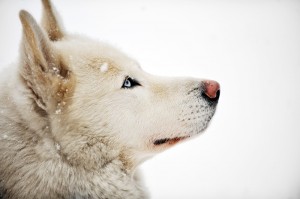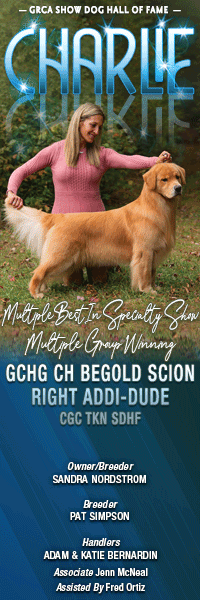Evading the Fad of Popularity

By Amy Fernandez
It’s impossible to predict how or when a breed will suddenly captivate the public. Plenty of calculated publicity attempts go down in flames, along with the breed in question. Likewise, the right/wrong word here or there and the whole supply/demand equation blows up in your face. For instance, Landseer can be thanked for sending both Saints and Newfies to the top of the purebred hit parade before either one actually existed as a bona fide breed, and in both cases breed development went into a complete tailspin and didn’t get back on track for decades.
It doesn’t take much to trigger this phenomenon. Some happenstance link to a celebrity name or cultural trend and we’re off to the races- regardless of whether any aspect of the situation actually relates to the breed. Check with the Bull Terrier and Chihuahua people if you want to know just how badly that can affect a breed. Anyway, the point is that it’s virtually impossible to direct or contain the resultant media distortions. Good or bad, those perceptions become embedded in popular culture.
So on to the story.
Although DNA sequencing has conclusively established the Siberian Husky’s truly ancient heritage, it’s existence was well-documented long before modern science settled that issue. However, the breed really didn’t enter popular culture until 1930 and AKC recognition was a result rather than a cause. That honor goes to the adventurous, literary, dog loving American hero, Admiral Byrd.
He latched on to the breed early in his polar forays. Admittedly skeptical at first, he quickly became a convert. As his exploits became ongoing headline news, Siberians came along for the ride. But over the years – he made five expeditions to Antarctica – he truly came to understand and appreciate its endlessly quirky and amazing nature. He freely admitted that his understanding of the breed came through trial and error learning and shared his insights through his extensive writing.
The breed played a leading role in his book Aerial Exploration of the Antarctic published in 1930. He wrote, “Housing 80 primitive dogs involves its own problems…they remain individualists to the last.” After a few paragraphs detailing those hardcore canine traits, he offered readers a closer look. “It would be well to tell here the story of Spy” who he explains was one of the expedition’s lead dogs. “Toward the end of March I found him in his crate in a pitiable condition. He had pulled his heart out during the unloading and was now so lame he could hardly walk.” For unknown reasons Spy’s hair was also falling out in clumps, “So his resistance to cold was low.”
The general consensus of the crew was to put the poor dog out of its misery.
Instead Byrd decided to wait and see. “The only available space in the camp was in my room and old Spy lay there for two days with his joints so crippled by cold that he could not stir, but he was on the mend. Saturday, March 30, we took him out for a bit of exercise…” That’s where he caught a glimpse of his team now being led by his replacement. “Spy watched them go rollicking past, and a spirit like that of the Old Guard must have taken possession of his pain-stiffened limbs.” To the crew’s collective amazement, this half-dead dog, barely able to walk, sprang to life and took off like a rocket, overtaking his team and shoving his replacement out of the lead position. “It was one of the most beautiful things I have ever seen…” Byrd adds that the entire camp stopped working to watch in stunned disbelief as Spy’s teammates greeted his return with unrestrained joy. “That these wild and untrammeled animals should be capable of harboring so deep and lasting a sentiment was beyond understanding.”
PS – Spy eventually recovered.
Byrd’s exploits definitely brought the Siberian into the limelight, but he never sugarcoated his descriptions or his bottom line message that primitive breeds are not distilled for mass consumption. Quite possibly that explains why, at least in one case, public fascination never graduated to the realm of a fad.
Short URL: https://caninechronicle.com/?p=138986
Comments are closed











